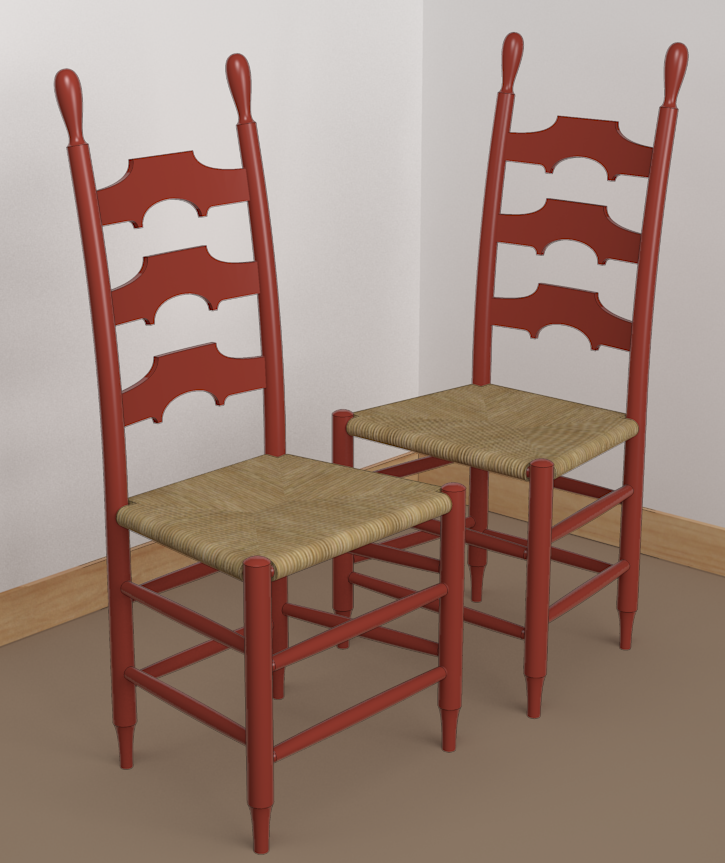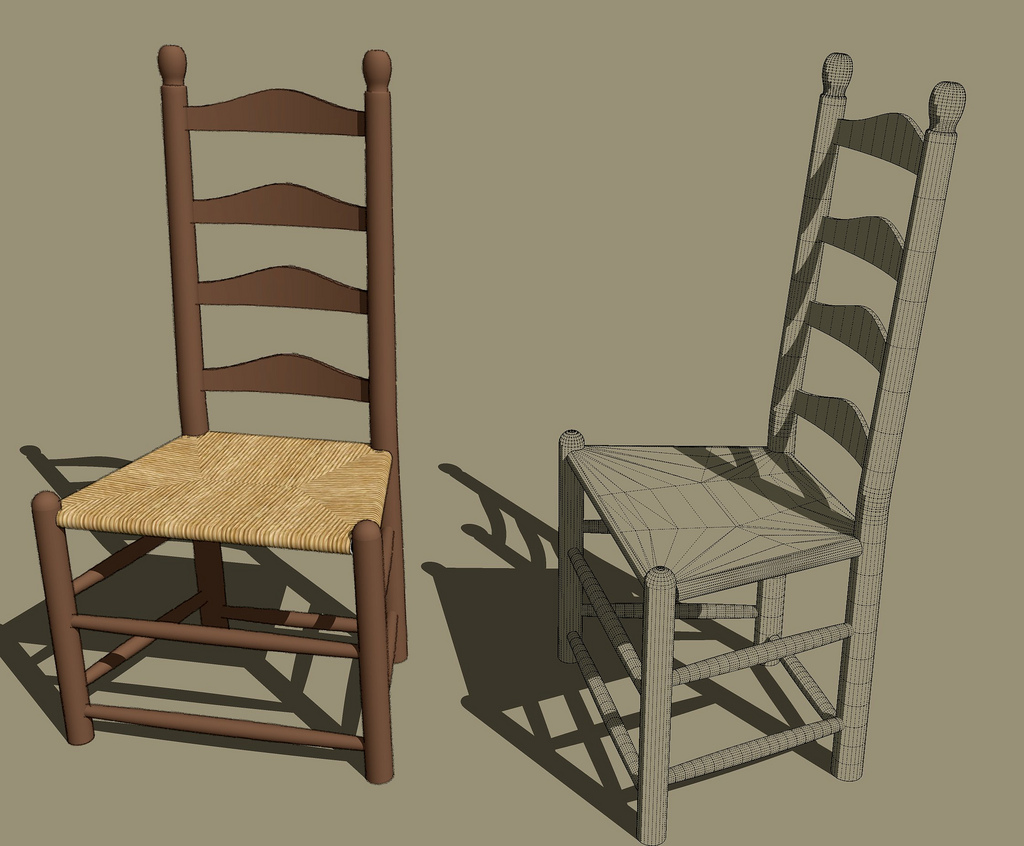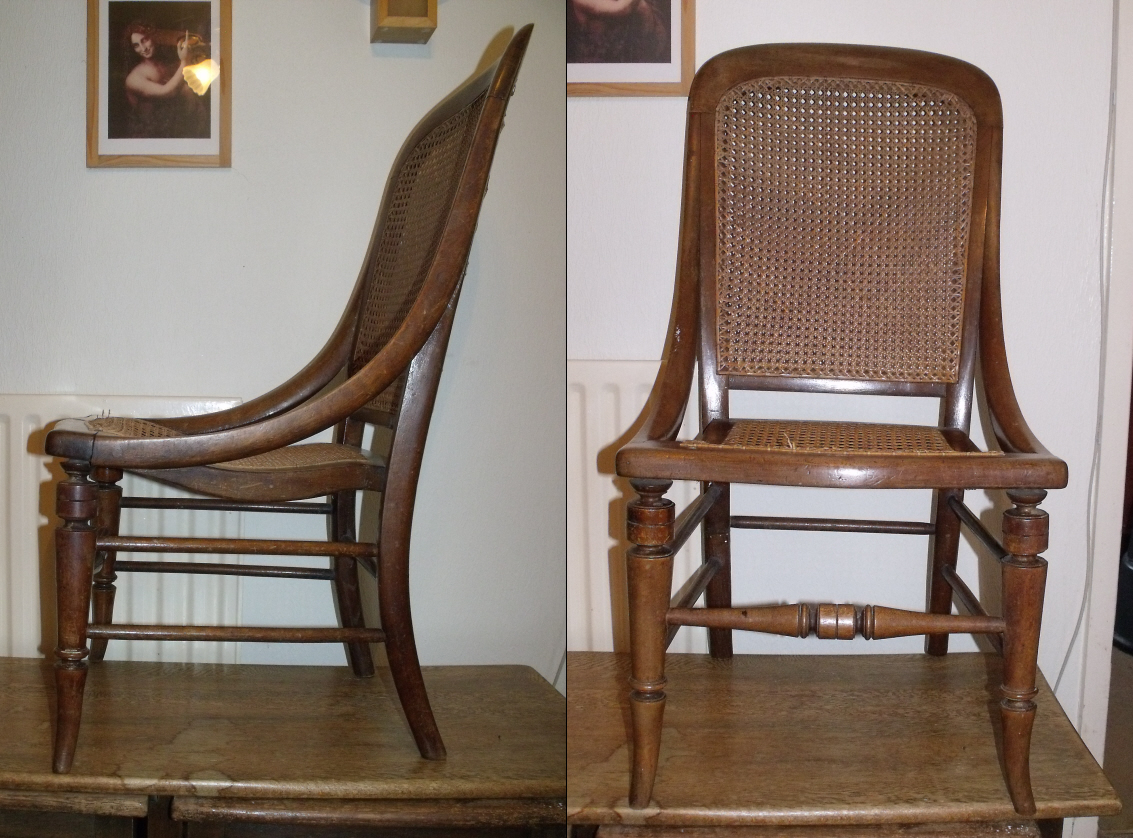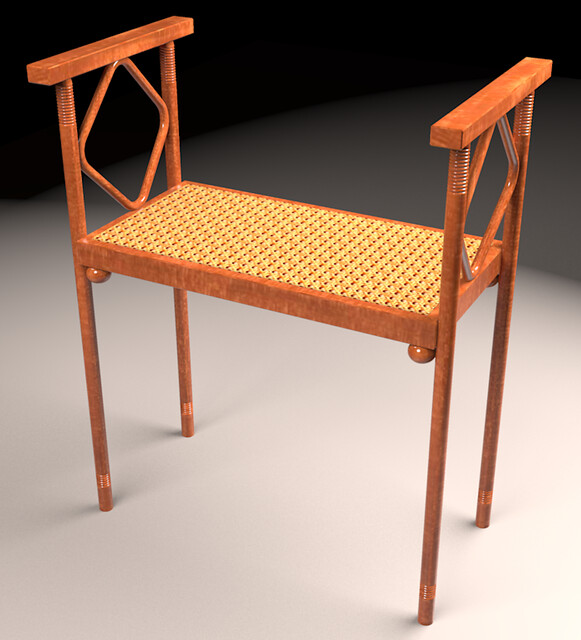Ladder Back Chair
-
I drew this simple ladder back chair yesterday for a tutorial and decided to give it a quick render in KT. The dimensions are from a chair that belonged to my mother. The legs on the original have a lot more detail than I included but I wanted to keep the profiles pretty simple since those turned details aren't the focus of the tutorial.

I drew a similar chair a number of nears ago but thanks to some plugins that have been released since then, this chair is much easier to draw now. The dimensions for this one came from an old book on colonial furniture.

-
Nice, Dave! I assume that, just as in a real-world shop, you lathed the back leg posts and then bent them afterward?
-
Thank you.
Yes, you're right on those back legs. Can you imagine turning them after they were bent?

The chair I have still has the dimples on the ends of the legs from the centers and the spur marks on the bottoms.
-
Actually, there are three types of those chairs, which is why I asked. Some of them are made using two-center turning in a "banjo". That method produces two straight sections with a visible corner where they meet. Others are made by turning straight and then bending, which produces a smooth, continuous curve. Your rendering looks like the latter. And, of course, there are some in which the back posts are completely straight (not very comfortable!).
-
Yeah, I've seen those multi-axis turnings, too. I've done some SketchUp models of tables with legs that are turned on several axes. It's an interesting modeling job and it gives you a good understanding of how it needs to be setup in reality.
The chair in the second image is supposed to have a straight back. At least that's the way it was shown in the old book. After I drew it, I decided it needed a bend although I don't like the bend I made all that much. Even with the angled back on the chair I have, it is still a bit too straight for me. The seat is a little too low and short, front to back, for me, too. Good for a little old lady, maybe.
-
I like how you've handled the woven seats.
I have this dinky little nursing chair (in need of some restoration) which I've been using as a subject to practise modelling - not very good result yet, but I keep going back to it.

-
-
@Dave that looks great. I wish I had some talent like that.........
-
Thank you, Dave.
-
@dave r said:
I would use a texture for the caning.
Indeed, if I ever get that far - I had planned to texture the seat. That caned effect looks good.
If I ever achieve my goal I'll post it. -
I hope so.

Advertisement








